Dynamic Capabilities: Unveiling Key Resources for Environmental Sustainability and Economic Sustainability, and Corporate Social Responsibility towards Sustainable Development Goals
Abstract
1. Introduction
- What are the main dynamic capabilities that can support the strategic business planning actions of companies to meet the Sustainable Development Goals?
- Which environmental sustainability, economic sustainability, and corporate social responsibility actions, developed by companies using the dynamic capabilities approach, can contribute to each SDG?
2. Theoretical Background
2.1. Environmental Sustainability, Economic Sustainability, and Corporate Social Responsibility
2.2. Sustainable Development Goals
2.3. Dynamic Capabilities
3. Research Methods and Materials
- What are the main dynamic capabilities supporting companies in planning strategic business actions to achieve the Sustainable Development Goals?
- Which environmental sustainability, economic sustainability, and corporate social responsibility actions, developed by companies using the dynamic capabilities approach, can contribute to each SDG?
- I1: Inclusion of papers that analyze companies, excluding specific processes such as supply chain or sales channels.
- I2: Inclusion of papers exploring dynamic capabilities (both internal and external) based on dynamic capability theory.
- I3: Inclusion of papers that illustrate sustainable development and its influence on any pillar: environmental sustainability, economic sustainability, and corporate social responsibility.
4. Results
4.1. Sustainable Development in Companies and Dynamic Capabilities Theory
4.2. Environmental Sustainability, Economic Sustainability, and Corporate Social Responsibility Concepts
4.3. Environmental Sustainability, Economic Sustainability, and Corporate Social Responsibility Approach
4.4. Dynamic Capabilities
5. Internal and External Sustainable Strategic Actions
Framework Proposal
6. Discussion
6.1. Practical Implications and Future Directions
6.2. Limitations
7. Conclusions
Supplementary Materials
Author Contributions
Funding
Data Availability Statement
Acknowledgments
Conflicts of Interest
References
- UN. UN Documents: Gathering a Body of Global Agreements. Our Common Future, Chapter 10: Managing the Commons. Available online: https://sustainabledevelopment.un.org/content/documents/5987our-common-future.pdf (accessed on 6 September 2020).
- Leite, C.M. Implementação Dos Objetivos de Desenvolvimento Sustentável Em Empresas: Contribuições Do Investimento Social Privado No Brasil. Master’s Thesis, Universidade Estadual de Campinas, Campinas, Brasil, 2018. [Google Scholar]
- Modgil, S.; Gupta, S.; Bhushan, B. Building a Living Economy through Modern Information Decision Support Systems and UN Sustainable Development Goals. Prod. Plan. Control 2020, 31, 967–987. [Google Scholar] [CrossRef]
- Gómez Martín, E.; Giordano, R.; Pagano, A.; van der Keur, P.; Máñez Costa, M. Using a System Thinking Approach to Assess the Contribution of Nature Based Solutions to Sustainable Development Goals. Sci. Total Environ. 2020, 738, 139693. [Google Scholar] [CrossRef] [PubMed]
- Le Caous, E.; Huarng, F. Economic Complexity and the Mediating Effects of Income Inequality: Reaching Sustainable Development in Developing Countries. Sustainability 2020, 12, 2089. [Google Scholar] [CrossRef]
- Fritz, M.M.C.; Cordova, M. Developing Managers’ Mindset to Lead More Sustainable Supply Chains. Clean. Logist. Supply Chain 2023, 7, 100108. [Google Scholar] [CrossRef]
- Cordova, M.F.; Celone, A. SDGs and Innovation in the Business Context Literature Review. Sustainability 2019, 11, 7043. [Google Scholar] [CrossRef]
- Palmer, T.B.; Flanagan, D.J. The Sustainable Company: Looking at Goals for People, Planet and Profits. J. Bus. Strategy 2016, 37, 28–38. [Google Scholar] [CrossRef]
- Almeida, C.M.V.B.; Agostinho, F.; Giannetti, B.F.; Huisingh, D. Integrating Cleaner Production into Sustainability Strategies: An Introduction to This Special Volume. J. Clean. Prod. 2015, 96, 1–9. [Google Scholar] [CrossRef]
- Teece, D.J.; Pisano, G.; Shuen, A. Dynamic Capabilities and Strategic Management. Strateg. Manag. J. 1997, 18, 509–533. [Google Scholar] [CrossRef]
- Gruchmann, T.; Timmer, V.; Gold, S.; Geßner, C. Dynamic Capabilities for Sustainable Change in the Food Processing Industry: A Multilevel Perspective. J. Clean. Prod. 2021, 311, 127534. [Google Scholar] [CrossRef]
- Shang, H.; Chen, R.; Li, Z. Dynamic Sustainability Capabilities and Corporate Sustainability Performance: The Mediating Effect of Resource Management Capabilities. Sustain. Dev. 2020, 28, 595–612. [Google Scholar] [CrossRef]
- Inigo, E.A.; Albareda, L. Sustainability Oriented Innovation Dynamics: Levels of Dynamic Capabilities and Their Path-Dependent and Self-Reinforcing Logics. Technol. Forecast. Soc. Chang. 2019, 139, 334–351. [Google Scholar] [CrossRef]
- de Oliveira, A.C.; Sokulski, C.C.; da Silva Batista, A.A.; de Francisco, A.C. Competencies for Sustainability: A Proposed Method for the Analysis of Their Interrelationships. Sustain. Prod. Consum. 2018, 14, 82–94. [Google Scholar] [CrossRef]
- Jabbour, C.J.C. Environmental Training in Organisations: From a Literature Review to a Framework for Future Research. Resour. Conserv. Recycl. 2013, 74, 144–155. [Google Scholar] [CrossRef]
- Lopes de Sousa Jabbour, A.B.; Ndubisi, N.O.; Roman Pais Seles, B.M. Sustainable Development in Asian Manufacturing SMEs: Progress and Directions. Int. J. Prod. Econ. 2020, 225, 107567. [Google Scholar] [CrossRef]
- Igwe, P.A.; Icha-Ituma, A.; Madichie, N.O. The Evaluation of CSR and Social Value Practices among Uk Commercial and Social Enterprises. Entrep. Bus. Econ. Rev. 2018, 6, 37–52. [Google Scholar] [CrossRef]
- Prokopiou, D.; Mavridoglou, G.; Toanoglou, M.; Tselentis, B. Tourism Development of the Cyclades Islands: Economic, Social and Carrying Capacity Assessment and Consequences. WIT Trans. Ecol. Environ. 2018, 217, 509–521. [Google Scholar] [CrossRef]
- Bowen, H. Social Responsibility of the Businessman Pub; Harper: New York, NY, USA, 1953; Volume 6. [Google Scholar]
- Mostepaniuk, A.; Nasr, E.; Awwad, R.I.; Hamdan, S.; Aljuhmani, H.Y. Managing a Relationship between Corporate Social Responsibility and Sustainability: A Systematic Review. Sustainability 2022, 14, 11203. [Google Scholar] [CrossRef]
- Ahmad, H.; Yaqub, M.; Lee, S.H. Environmental-, Social-, and Governance-Related Factors for Business Investment and Sustainability: A Scientometric Review of Global Trends. Environ. Dev. Sustain. 2023, 1–23. [Google Scholar] [CrossRef]
- Sargani, G.R.; Zhou, D.; Raza, M.H.; Wei, Y. Sustainable Entrepreneurship in the Agriculture Sector: The Nexus of the Triple Bottom Line Measurement Approach. Sustainability 2020, 12, 3275. [Google Scholar] [CrossRef]
- Taliento, M.; Favino, C.; Netti, A. Impact of Environmental, Social, and Governance Information on Economic Performance: Evidence of a Corporate ‘Sustainability Advantage’ from Europe. Sustainability 2019, 11, 1738. [Google Scholar] [CrossRef]
- Liang, Y.; Lee, M.J.; Jung, J.S. Dynamic Capabilities and an ESG Strategy for Sustainable Management Performance. Front. Psychol. 2022, 13, 887776. [Google Scholar] [CrossRef]
- Hussain, N.; Rigoni, U.; Orij, R.P. Corporate Governance and Sustainability Performance: Analysis of Triple Bottom Line Performance. J. Bus. Ethics 2018, 149, 411–432. [Google Scholar] [CrossRef]
- Mensah, J. Sustainable Development: Meaning, History, Principles, Pillars, and Implications for Human Action: Literature Review. Cogent. Soc. Sci. 2019, 5, 1653531. [Google Scholar] [CrossRef]
- Gosling-Goldsmith, J. Sustainable Development Goals and Uncertainty Visualization. Master’s Thesis, Faculty of Geo-Information Science and Earth Observation, Enschede, The Netherlands, 2018. [Google Scholar]
- Littlewood, D.; Holt, D. How Social Enterprises Can Contribute to the Sustainable Development Goals (SDGs)—A Conceptual Framework. In Contemporary Issues in Entrepreneurship Research; Emerald Group Publishing Ltd.: Bingley, UK, 2018; Volume 8, pp. 33–46. [Google Scholar]
- Avtar, R.; Aggarwal, R.; Kharrazi, A.; Kumar, P.; Kurniawan, T.A. Utilizing Geospatial Information to Implement SDGs and Monitor Their Progress. Environ. Monit. Assess. 2020, 192, 35. [Google Scholar] [CrossRef]
- Sachs, I. Entering the Anthropocene: The Twofold Challenge of Climate Change and Poverty Eradication. In Transitions to Sustainability; Springer: Berlin/Heidelberg, Germany, 2015; pp. 7–18. [Google Scholar] [CrossRef]
- Vrabcová, P.; Urbancová, H. Approaches of Selected Organisations in the Czech Republic to Promoting the Concept of Sustainable Development and Corporate Social Responsibility. Agric. Econ. 2021, 67, 255–265. [Google Scholar] [CrossRef]
- Cristea, M.; Noja, G.G.; Thalassinos, E.; Cîrciumaru, D.; Ponea, C.Ș.; Durău, C.C. Environmental, Social and Governance Credentials of Agricultural Companies—The Interplay with Company Size. Resources 2022, 11, 30. [Google Scholar] [CrossRef]
- Hudaefi, F.A. How Does Islamic Fintech Promote the SDGs? Qualitative Evidence from Indonesia. Qual. Res. Financ. Mark. 2020, 12, 353–366. [Google Scholar] [CrossRef]
- Plastun, A.; Makarenko, I.; Grabovska, T.; Situmeang, R.; Bashlai, S. Sustainable Development Goals in Agriculture and Responsible Investment: A Comparative Study of the Czech Republic and Ukraine. Probl. Perspect. Manag. 2021, 19, 65–76. [Google Scholar] [CrossRef]
- Ramani, S.V.; Parihar, R.; Sen, S. On Nudging MNE Toward SDG1: A Policy Perspective. Int. Bus. Manag. 2017, 33, 89–129. [Google Scholar] [CrossRef]
- Mina, H.; Kannan, D.; Gholami-Zanjani, S.M.; Biuki, M. Transition towards Circular Supplier Selection in Petrochemical Industry: A Hybrid Approach to Achieve Sustainable Development Goals. J. Clean. Prod. 2021, 286, 125273. [Google Scholar] [CrossRef]
- Priyadarshini, P.; Abhilash, P.C. Policy Recommendations for Enabling Transition towards Sustainable Agriculture in India. Land Use Policy 2020, 96, 104718. [Google Scholar] [CrossRef]
- Saari, U.A.; Herstatt, C.; Tiwari, R.; Dedehayir, O.; Mäkinen, S.J. The Vegan Trend and the Microfoundations of Institutional Change: A Commentary on Food Producers’ Sustainable Innovation Journeys in Europe. Trends Food Sci. Technol. 2021, 107, 161–167. [Google Scholar] [CrossRef]
- Macassa, G. Social Enterprise, Population Health and Sustainable Development Goal 3: A Public Health Viewpoint. Ann. Glob. Health 2021, 87, 52–59. [Google Scholar] [CrossRef]
- Laraia, L.; Robke, L.; Waldmann, H. Bioactive Compound Collections: From Design to Target Identification. Chem 2018, 4, 705–730. [Google Scholar] [CrossRef]
- Nguyen, M.H.T.; Carr, S.C.; Hodgetts, D.; Fauchart, E. Why Do Some Social Enterprises Flourish in Vietnam? A Comparison of Human and Ecosystem Partnerships. Sustain. Account. Manag. Policy J. 2021, 12, 1312–1347. [Google Scholar] [CrossRef]
- Gao, L.; Bryan, B.A. Finding Pathways to National-Scale Land-Sector Sustainability. Nature 2017, 544, 217–222. [Google Scholar] [CrossRef]
- Conway, D.; Robinson, B.; Mudimu, P.; Chitekwe, T.; Koranteng, K.; Swilling, M. Exploring Hybrid Models for Universal Access to Basic Solar Energy Services in Informal Settlements: Case Studies from South Africa and Zimbabwe. Energy Res. Soc. Sci. 2019, 56, 101202. [Google Scholar] [CrossRef]
- Woo, W.T.; Koh, H.L.; Teh, S.Y. Achieving Excellence in Sustainable Development Goals in Sunway University Malaysia. In World Sustainability Series; Springer: Berlin/Heidelberg, Germany, 2020; pp. 265–282. [Google Scholar] [CrossRef]
- Ganson, B. Business (Not) for Peace: Incentives and Disincentives for Corporate Engagement on Good Governance and Peaceful Development in the African Context. S. Afr. J. Int. Aff. 2019, 26, 209–232. [Google Scholar] [CrossRef]
- Kay, N.M.; Leih, S.; Teece, D.J. The Role of Emergence in Dynamic Capabilities: A Restatement of the Framework and Some Possibilities for Future Research. Ind. Corp. Chang. 2018, 27, 623–638. [Google Scholar] [CrossRef]
- Zollo, M.; Winter, S.G. Deliberate Learning and the Evolution of Dynamic Capabilities. Organ. Sci. 2002, 13, 339–351. [Google Scholar] [CrossRef]
- Shuen, A.; Feiler, P.F.; Teece, D.J. Dynamic Capabilities in the Upstream Oil and Gas Sector: Managing next Generation Competition. Energy Strategy Rev. 2014, 3, 5–13. [Google Scholar] [CrossRef]
- Teece, D.J. Explicating Dynamic Capabilities: The Nature and Microfoundations of (Sustainable) Enterprise Performance. Strateg. Manag. J. 2007, 28, 1319–1350. [Google Scholar] [CrossRef]
- Teece, D.; Peteraf, M.; Leih, S. Dynamic Capabilities and Organizational Agility: Risk, Uncertainty, and Strategy in the Innovation Economy. Calif. Manag. Rev. 2016, 58, 13–35. [Google Scholar] [CrossRef]
- GVces As Empresas Frente Aos Objetivos Do Desenvolvimento Sustentável. Available online: https://www.estrategiaods.org.br/as-empresas-frente-aos-objetivos-do-desenvolvimento-sustentavel-ods/ (accessed on 11 March 2021).
- Petit, N.; Teece, D.J. Innovating Big Tech Firms and Competition Policy: Favoring Dynamic over Static Competition. Ind. Corp. Chang. 2021, 30, 1168–1198. [Google Scholar] [CrossRef]
- Baden-Fuller, C.; Teece, D.J. Market Sensing, Dynamic Capability, and Competitive Dynamics. Ind. Mark. Manag. 2020, 89, 105–106. [Google Scholar] [CrossRef]
- Teece, D.J. Business Models and Dynamic Capabilities. Long Range Plan. 2018, 51, 40–49. [Google Scholar] [CrossRef]
- Bhattacharya, S.; Momaya, K.S. Actionable Strategy Framework for Digital Transformation in AECO Industry. Eng. Constr. Archit. Manag. 2021, 28, 1397–1422. [Google Scholar] [CrossRef]
- Engert, S.; Baumgartner, R.J. Corporate Sustainability Strategy—Bridging the Gap between Formulation and Implementation. J. Clean. Prod. 2016, 113, 822–834. [Google Scholar] [CrossRef]
- Grainger-Brown, J.; Malekpour, S. Implementing the Sustainable Development Goals: A Review of Strategic Tools and Frameworks Available to Organisations. Sustainability 2019, 11, 1381. [Google Scholar]
- Nylander, E.; Österlund, L.; Fejes, A. Exploring the Adult Learning Research Field by Analysing Who Cites Whom. Vocat. Learn. 2018, 11, 113–131. [Google Scholar] [CrossRef]
- Ayuso, S.; Rodríguez, M.Á.; Ricart, J.E. Responsible Competitiveness at the “Micro” Level of the Firm—Using Stakeholder Dialogue as a Source for New Ideas: A Dynamic Capability Underlying Sustainable Innovation. Corp. Gov. 2006, 6, 475–490. [Google Scholar] [CrossRef]
- Fetscherin, M.; Heinrich, D. Consumer Brand Relationships Research: A Bibliometric Citation Meta-Analysis. J. Bus. Res. 2015, 68, 380–390. [Google Scholar] [CrossRef]
- Coffay, M.; Bocken, N. Sustainable by Design: An Organizational Design Tool for Sustainable Business Model Innovation. J. Clean. Prod. 2023, 427, 139294. [Google Scholar] [CrossRef]
- Su, X.; Wang, S.; Li, F. The Impact of Digital Transformation on ESG Performance Based on the Mediating Effect of Dynamic Capabilities. Sustainability 2023, 15, 13506. [Google Scholar] [CrossRef]
- Kortus, L.; Gutmann, T. How Do Firms Build Dynamic Capabilities to Develop Sustainable Products? A Multiple Case Study in the Manufacturing Industry. J. Clean. Prod. 2023, 415, 137887. [Google Scholar] [CrossRef]
- Feng, H.; Wang, F.; Song, G.; Liu, L. Digital Transformation on Enterprise Green Innovation: Effect and Transmission Mechanism. Int. J. Environ. Res. Public Health 2022, 19, 10614. [Google Scholar] [CrossRef] [PubMed]
- Andersson, S.; Svensson, G.; Molina-Castillo, F.J.; Otero-Neira, C.; Lindgren, J.; Karlsson, N.P.E.; Laurell, H. Sustainable Development—Direct and Indirect Effects between Economic, Social, and Environmental Dimensions in Business Practices. Corp. Soc. Responsib. Environ. Manag. 2022, 29, 1158–1172. [Google Scholar] [CrossRef]
- Gadekar, R.; Sarkar, B.; Gadekar, A. Investigating the Relationship among Industry 4.0 Drivers, Adoption, Risks Reduction, and Sustainable Organizational Performance in Manufacturing Industries: An Empirical Study. Sustain. Prod. Consum. 2022, 31, 670–692. [Google Scholar] [CrossRef]
- Al-Shami, S.; Rashid, N. A Holistic Model of Dynamic Capabilities and Environment Management System towards Eco-Product Innovation and Sustainability in Automobile Firms. J. Bus. Ind. Mark. 2022, 37, 402–416. [Google Scholar] [CrossRef]
- Forcadell, F.J.; Aracil, E. A Purpose-Action Framework for Corporate Social Responsibility in Times of Shock. J. Clean. Prod. 2021, 312, 127789. [Google Scholar] [CrossRef]
- Dyduch, W.; Chudziński, P.; Cyfert, S.; Zastempowski, M. Dynamic Capabilities, Value Creation and Value Capture: Evidence from SMEs under COVID-19 Lockdown in Poland. PLoS ONE 2021, 16, e0252423. [Google Scholar] [CrossRef] [PubMed]
- Van Lieshout, J.W.F.C.; Nijhof, A.H.J.; Naarding, G.J.W.; Blomme, R.J. Connecting Strategic Orientation, Innovation Strategy, and Corporate Sustainability: A Model for Sustainable Development through Stakeholder Engagement. Bus. Strat. Environ. 2021, 30, 4068–4080. [Google Scholar] [CrossRef]
- Chowdhury, P.; Shumon, R. Minimizing the Gap between Expectation and Ability: Strategies for Smes to Implement Social Sustainability Practices. Sustainability 2020, 12, 6408. [Google Scholar] [CrossRef]
- Da Giau, A.; Foss, N.J.; Furlan, A.; Vinelli, A. Sustainable Development and Dynamic Capabilities in the Fashion Industry: A Multi-Case Study. Corp. Soc. Responsib. Environ. Manag. 2020, 27, 1509–1520. [Google Scholar] [CrossRef]
- Felsberger, A.; Qaiser, F.H.; Choudhary, A.; Reiner, G. The Impact of Industry 4.0 on the Reconciliation of Dynamic Capabilities: Evidence from the European Manufacturing Industries. Prod. Plan. Control 2020, 33, 277–300. [Google Scholar] [CrossRef]
- Criado-Gomis, A.; Iniesta-Bonillo, M.Á.; Cervera-Taulet, A.; Ribeiro-Soriano, D. Customer Functional Value Creation through a Sustainable Entrepreneurial Orientation Approach. Econ. Res. Ekon. Istraz. 2020, 33, 2360–2377. [Google Scholar] [CrossRef]
- Näyhä, A. Finnish Forest-Based Companies in Transition to the Circular Bioeconomy—Drivers, Organizational Resources and Innovations. For. Policy Econ. 2020, 110, 101936. [Google Scholar] [CrossRef]
- Radnejad, A.B.; Osiyevskyy, O.; Vredenburg, H. Barriers to Radical Process Innovation: A Case of Environmental Technology in the Oil Industry. J. Strat. Manag. 2020, 13, 453–476. [Google Scholar] [CrossRef]
- Sołoducho-Pelc, L.; Sulich, A. Between Sustainable and Temporary Competitive Advantages in the Unstable Business Environment. Sustainability 2020, 12, 8832. [Google Scholar] [CrossRef]
- Walton, S.; Zhang, A.; O’Kane, C. Energy Eco-Innovations for Sustainable Development: Exploring Organizational Strategic Capabilities through an Energy Cultures Framework. Bus. Strat. Environ. 2020, 29, 812–826. [Google Scholar] [CrossRef]
- Mousavi, S.; Bossink, B.; van Vliet, M. Microfoundations of Companies’ Dynamic Capabilities for Environmentally Sustainable Innovation: Case Study Insights from High-Tech Innovation in Science-Based Companies. Bus. Strat. Environ. 2019, 28, 366–387. [Google Scholar] [CrossRef]
- Krätzig, O.; Franzkowiak, V.; Sick, N. Multi-Level Perspective to Facilitate Sustainable Transitions—A Pathway for German Oems towards Electric Vehicles. Int. J. Innov. Manag. 2019, 23, 1940006. [Google Scholar] [CrossRef]
- Mousavi, S.; Bossink, B.; van Vliet, M. Dynamic Capabilities and Organizational Routines for Managing Innovation towards Sustainability. J. Clean. Prod. 2018, 203, 224–239. [Google Scholar] [CrossRef]
- Cheah, S.; Ho, Y.P.; Li, S. Business Model Innovation for Sustainable Performance in Retail and Hospitality Industries. Sustainability 2018, 10, 3952. [Google Scholar] [CrossRef]
- Mousavi, S.; Bossink, B.A.G. Firms’ Capabilities for Sustainable Innovation: The Case of Biofuel for Aviation. J. Clean. Prod. 2017, 167, 1263–1275. [Google Scholar] [CrossRef]
- Souza, A.A.A.; Alves, M.F.R.; Macini, N.; Cezarino, L.O.; Liboni, L.B. Resilience for Sustainability as an Eco-Capability. Int. J. Clim. Chang. Strateg. Manag. 2017, 9, 581–599. [Google Scholar] [CrossRef]
- TEECE, D.; PISANO, G. The Dynamic Capabilities of Firms: An Introduction. Ind. Corp. Chang. 1994, 3, 537–556. [Google Scholar] [CrossRef]
- Teece, D.J. Dynamic Capabilities as (Workable) Management Systems Theory. J. Manag. Organ. 2018, 24, 359–368. [Google Scholar] [CrossRef]
- WBCSD Guia Para CEOs Sobre Os Objetivos de Desenvolvimento Sustentável. Available online: https://cebds.org/publicacoes/guia-do-ceo-para-os-objetivos-de-desenvolvimento-sustentavel/#.X8-7PthKjIU (accessed on 7 December 2020).
- Bhattacharya, C.; Jekielek, R. Sustainability Progress Is Stalled at Most Companies. MIT Sloan Manag. Rev. 2023, 64, 1–4. [Google Scholar]
- Mitręga, M.; Choi, T.M. How Small-and-Medium Transportation Companies Handle Asymmetric Customer Relationships under COVID-19 Pandemic: A Multi-Method Study. Transp. Res. E Logist. Transp. Rev. 2021, 148, 102249. [Google Scholar] [CrossRef]
- CEBDS. Planejando o Brasil Pós-Pandemia; SciELO: Rio de Janeiro, Brasil, 2020. [Google Scholar]
- Abram, N.K.; MacMillan, D.C.; Xofis, P.; Ancrenaz, M.; Tzanopoulos, J.; Ong, R.; Goossens, B.; Koh, L.P.; Del Valle, C.; Peter, L.; et al. Identifying Where REDD+ Financially Out-Competes Oil Palm in Floodplain Landscapes Using a Fine-Scale Approach. PLoS ONE 2016, 11, e0156481. [Google Scholar] [CrossRef]
- Heubeck, T. Walking on the Gender Tightrope: Unlocking ESG Potential through CEOs’ Dynamic Capabilities and Strategic Board Composition. Bus. Strat. Environ. 2023. [Google Scholar] [CrossRef]
- Zapata-cantu, L.; González, F. Challenges for Innovation and Sustainable Development in Latin America: The Significance of Institutions and Human Capital. Sustainability 2021, 13, 4077. [Google Scholar] [CrossRef]
- Nayal, P.; Pandey, N.; Paul, J. COVID-19 Pandemic and Consumer-Employee-Organization Wellbeing: A Dynamic Capability Theory Approach. J. Consum. Aff. 2022, 56, 359–390. [Google Scholar] [CrossRef]
- Yang, L.X. From General Principles of Civil Law to General Provisions of Civil Law: A Historical Leap in Contemporary Chinese Civil Law. Soc. Sci. China 2019, 2, 85–91. [Google Scholar]
- Kolk, A. The Social Responsibility of International Business: From Ethics and the Environment to CSR and Sustainable Development. J. World Bus. 2016, 51, 23–34. [Google Scholar] [CrossRef]
- Anderies, J.M.; Folke, C.; Walker, B.; Ostrom, E. Aligning Key Concepts for Global Change Policy: Robustness, Resilience, and Sustainability. Ecol. Soc. 2013, 18, 16. [Google Scholar] [CrossRef]
- Rahman, H.U.; Zahid, M.; Al-Faryan, M.A.S. ESG and Firm Performance: The Rarely Explored Moderation of Sustainability Strategy and Top Management Commitment. J. Clean. Prod. 2023, 404, 136859. [Google Scholar] [CrossRef]
- Jasińska, E.; Jasiński, M. Mining Industry Corporate Social Responsibility to Education Development. Resources 2022, 11, 65. [Google Scholar] [CrossRef]
- Obrecht, M.; Feodorova, Z.; Rosi, M. Assessment of Environmental Sustainability Integration into Higher Education for Future Experts and Leaders. J. Environ. Manag. 2022, 316, 115223. [Google Scholar] [CrossRef]
- Bagur-Femenías, L.; Buil-Fabrega, M.; Aznar, J.P. Teaching Digital Natives to Acquire Competences for Sustainable Development. Int. J. Sustain. High. Educ. 2020, 21, 1053–1069. [Google Scholar] [CrossRef]
- Fan, J.H.; Omura, A.; Roca, E. An Industry-Guided Review of Responsible Investing: Bridging the Divide between Academia and Industry. J. Clean. Prod. 2022, 354, 131685. [Google Scholar] [CrossRef]
- Weerts, K.; Vermeulen, W.; Witjes, S. On Corporate Sustainability Integration Research: Analysing Corporate Leaders’ Experiences and Academic Learnings from an Organisational Culture Perspective. J. Clean. Prod. 2018, 203, 1201–1215. [Google Scholar] [CrossRef]
- Hassan, Q.M.; Khudir, I.M.; Olawuyi San, D.S. Regulating Corporate Social Responsibility in Energy and Extractive Industries: The Case of International Oil Companies in a Developing Country. Resour. Policy 2023, 83, 103607. [Google Scholar] [CrossRef]
- Zhu, N.; Zhou, Y.; Zhang, S.; Yan, J. Tax Incentives and Environmental, Social, and Governance Performance: Empirical Evidence from China. Environ. Sci. Pollut. Res. 2023, 30, 54899–54913. [Google Scholar] [CrossRef]
- Franco, J.d.A.B.; Domingues, A.M.; Africano, N.d.A.; Deus, R.M.; Battistelle, R.A.G. Sustainability in the Civil Construction Sector Supported by Industry 4.0 Technologies: Challenges and Opportunities. Infrastructures 2022, 7, 43. [Google Scholar] [CrossRef]
- Sulich, A.; Sołoducho-Pelc, L. The Circular Economy and the Green Jobs Creation. Environ. Sci. Pollut. Res. 2022, 29, 14231–14247. [Google Scholar] [CrossRef]
- Torres, L.; Ripa, D.; Jain, A.; Herrero, J.; Leka, S. The Potential of Responsible Business to Promote Sustainable Work—An Analysis of CSR/ESG Instruments. Saf. Sci. 2023, 164, 106151. [Google Scholar] [CrossRef]
- Leoni, G.; Maione, G.; Mazzara, L. Digital Governance for Addressing Performance Challenges within Inter-Municipalities. In Big Data and Decision-Making: Applications and Uses in the Public and Private Sector; Emerald Publishing Limited: Bingley, UK, 2023; pp. 27–42. [Google Scholar] [CrossRef]
- Wang, Z.; Chu, E.; Hao, Y. Towards Sustainable Development: How Does ESG Performance Promotes Corporate Green Transformation. Int. Rev. Financ. Anal. 2024, 91, 102982. [Google Scholar] [CrossRef]
- Akhtar, M.F.; Suki, N.M. Green Consumer Behaviour: Integration of Theory of Planned Behaviour and Technology Acceptance Model. Res. Anthol. Meas. Achiev. Sustain. Dev. Goals 2022, 3, 863–871. [Google Scholar] [CrossRef]
- Arena, M.; Azzone, G.; Mapelli, F. Corporate Social Responsibility Strategies in the Utilities Sector:A Comparative Study. Sustain. Prod. Consum. 2019, 18, 83–95. [Google Scholar] [CrossRef]
- Escribano, M.; Gaspar, P.; Mesias, F.J. Creating Market Opportunities in Rural Areas through the Development of a Brand That Conveys Sustainable and Environmental Values. J. Rural. Stud. 2020, 75, 206–215. [Google Scholar] [CrossRef]
- Radmehr, R.; Shayanmehr, S.; Ali, E.B.; Ofori, E.K.; Jasińska, E.; Jasiński, M. Exploring the Nexus of Renewable Energy, Ecological Footprint, and Economic Growth through Globalization and Human Capital in G7 Economics. Sustainability 2022, 14, 12227. [Google Scholar] [CrossRef]
- Ahmed, N.; Sheikh, A.A.; Mahboob, F.; Ali, M.S.E.; Jasińska, E.; Jasiński, M.; Leonowicz, Z.; Burgio, A. Energy Diversification: A Friend or Foe to Economic Growth in Nordic Countries? A Novel Energy Diversification Approach. Energies 2022, 15, 5422. [Google Scholar] [CrossRef]
- Żywiec, J.; Szpak, D.; Piegdoń, I.; Boryczko, K.; Pietrucha-Urbanik, K.; Tchórzewska-Cieślak, B.; Rak, J. An Approach to Assess the Water Resources Reliability and Its Management. Resources 2023, 12, 4. [Google Scholar] [CrossRef]
- Rehman, R.; Aslam, M.S.; Jasińska, E.; Javed, M.F.; Goňo, M. Guidelines for the Technical Sustainability Evaluation of the Urban Drinking Water Systems Based on Analytic Hierarchy Process. Resources 2023, 12, 8. [Google Scholar] [CrossRef]
- Sullivan, K.; Thomas, S.; Rosano, M. Using Industrial Ecology and Strategic Management Concepts to Pursue the Sustainable Development Goals. J. Clean. Prod. 2018, 174, 237–246. [Google Scholar] [CrossRef]
- Ivascu, L.; Domil, A.; Sarfraz, M.; Bogdan, O.; Burca, V.; Pavel, C. New Insights into Corporate Sustainability, Environmental Management and Corporate Financial Performance in European Union: An Application of VAR and Granger Causality Approach. Environ. Sci. Pollut. Res. 2022, 29, 82827–82843. [Google Scholar] [CrossRef]
- Pham, Q.M.; Dhir, M.; Carrier Guillomet, T. How Do Corporate Charitable and Economic Social Responsibility Practices Help to Improve the Quality of Work Life for Employees? Worldw. Hosp. Tour. Themes 2022, 14, 300–311. [Google Scholar] [CrossRef]
- Khanna, P.; Khanra, S. Citizen Empowerment through Smart Surveillance: Evidence from Indian Smart Cities. Digit. Policy Regul. Gov. 2023, 25, 385–401. [Google Scholar] [CrossRef]
- La Rocca, T.; La Rocca, M.; Fasano, F.; Cariola, A. Does a Country’s Environmental Policy Affect the Value of Small and Medium Sized Enterprises Liquidity in the Energy Sector? Corp. Soc. Responsib. Environ. Manag. 2023, 30, 277–290. [Google Scholar] [CrossRef]
- Herrmann, J.D.; Sangalli, L.C.; Teece, D.J. Dynamic Capabilities: Fostering an Innovation-Friendly Environment in Brazil. RAE Rev. Adm. De Empresas 2017, 57, 283–287. [Google Scholar] [CrossRef]
- Patterson, I.; Balderas-Cejudo, A. Tourism towards Healthy Lives and Well-Being for Older Adults and Senior Citizens: Tourism Agenda 2030. Tour. Rev. 2022, 78, 427–442. [Google Scholar] [CrossRef]

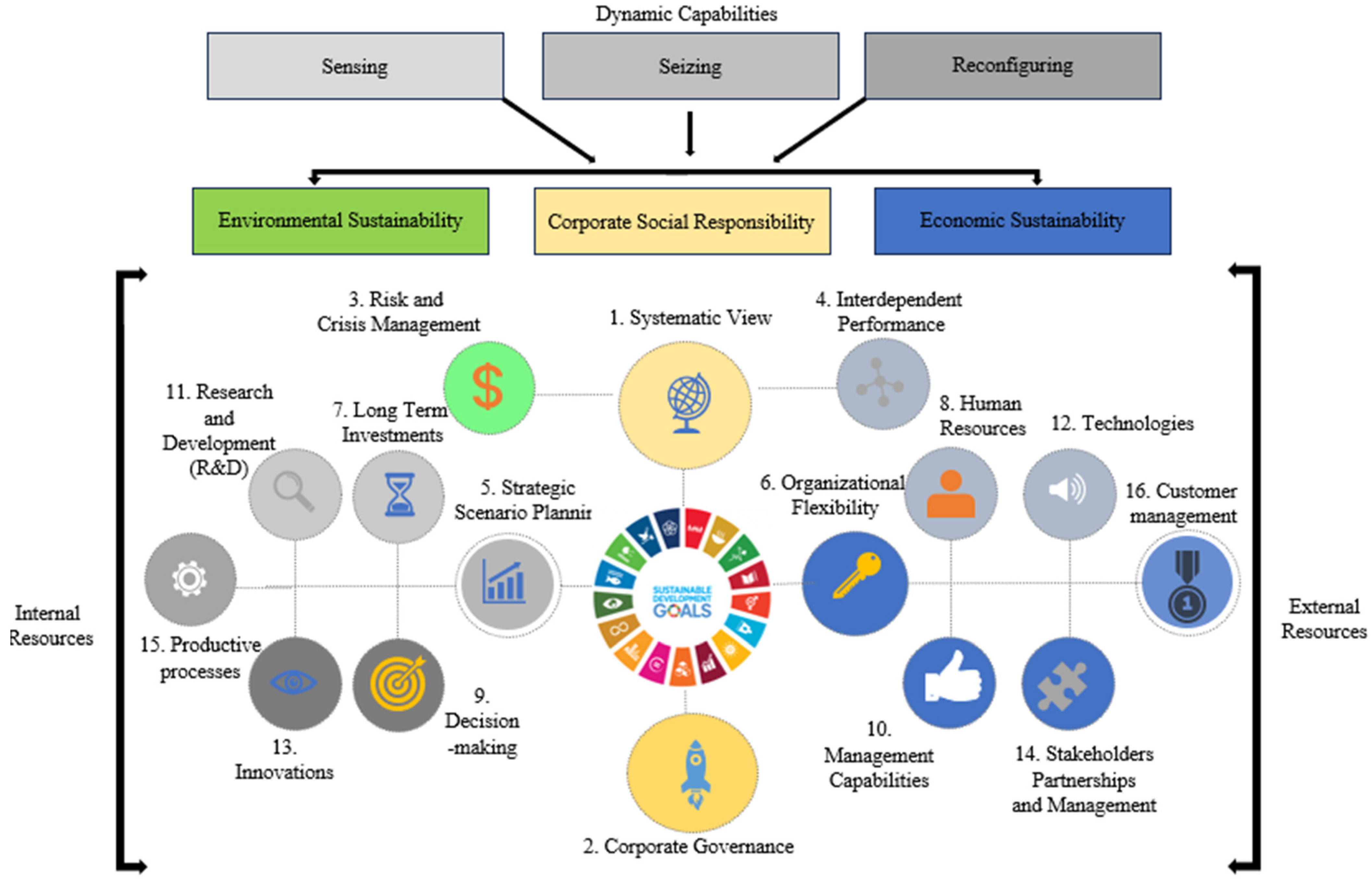
| Search Criteria | Inclusion Criteria | Exclusion Criteria |
|---|---|---|
| Definition of the research question | Main dynamic capabilities for companies planning strategic actions to meet the SDGs. Environmental and economic Sustainability and CSR actions developed by companies using the dynamic capabilities to achieve the SDGs? | Out of scope |
| Definition of the objective | Which dynamic capabilities can support the business strategic planning to achieve the environmental and economic sustainability and CSR. | Out of scope |
| Definition of the Data bases | SCOPUS and Web of Science | Other databases |
| keyword definition | (“Sustainable Development”) AND (“Dynamic Capabilities”) AND (“Company”) | Other words combination |
| Topic | Title, abstract, and keywords | Words that were not present |
| Publication period | From 2016 | Prior to 2016 |
| Document Type | Articles and review | Do not fit into articles and review |
| Publishing phase | Without restriction | Without restriction |
| Source | Journals | Books and conferences |
| Language | English and Portuguese | Other languages |
| Final article selection | Full read | Do not attend the criteria |
| Classification system | Companies focused on SDGs and that approach any dynamic capabilities | Governments; Public Sector or NGO’s |
| Data extraction | Article information, dynamic capabilities, sustainable development approach | Out of scope |
| Data Analysis | Keyword co-occurrence network; concepts, dynamic capabilities; SDG implementation | Out of scope |
| Concepts | |
|---|---|
| Environmental Sustainability | Shows how companies interact with environment resources, including local and global ecosystems, as well as maintain corporate transparency. Environmental sustainability encourages the development and dissemination of environmental actions and how a company assesses the environmental impacts of any project, including new or existing industrial activities, with a focus on eco-efficiency; that is, doing more with less. |
| Economic Sustainability | Represents the actions and economic sustainability cost contributions that a company makes in the pursuit of sustainable development, as well as corporate integrity, performance, financial resource management, and business transparency. It is about long-term profitable development without adversely affecting cultural, social, or environmental aspects, with a focus on economically sustainable prosperity. |
| Corporate Social Responsibility | Deals with the management of human resources, well-being, health, safety, education, working conditions, access to environmentally adequate products and services, equality, diversity, and social integration among all company members, customers, consumers, and other stakeholders, as well as guaranteeing social progress. |
| Title | Ref. | Environmental Sustainability | Economic Sustainability | CSR |
|---|---|---|---|---|
| Sustainable by design: An organizational design tool for sustainable business model innovation | [61] | x | x | x |
| The Impact of Digital Transformation on CSR Performance Based on the Mediating Effect of dynamic capabilities | [62] | x | x | x |
| How do firms build dynamic capabilities to develop sustainable products? A multiple case study in the manufacturing industry | [63] | x | x | |
| Digital Transformation on Enterprise Green Innovation: Effect and Transmission Mechanism | [64] | x | x | |
| Sustainable development—Direct and indirect effects between Economic Sustainability, social, and environmental dimensions in business practices | [65] | x | x | x |
| Investigating the relationship among Industry 4.0 drivers, adoption, risks reduction, and sustainable organizational performance in manufacturing… | [66] | x | ||
| A holistic model of dynamic capabilities and environment management system towards eco-product innovation and sustainability in automobile… | [67] | x | x | |
| A purpose-action framework for Corporate Social Responsibility in times of shock | [68] | x | ||
| Dynamic capabilities, value creation and value capture: Evidence from SMEs under COVID-19 lockdown in Poland | [69] | x | x | x |
| Dynamic capabilities for sustainable change in the food processing industry: A multilevel perspective | [11] | x | x | |
| Connecting strategic orientation, innovation strategy, and corporate sustainability: A model for sustainable development through stakeholder… | [70] | x | x | x |
| Dynamic sustainability capabilities and corporate sustainability performance: The mediating effect of resource management capabilities | [12] | x | x | x |
| Dynamic sustainability requirements of stakeholders and the supply portfolio | [71] | x | x | |
| Sustainable development and dynamic capabilities in the fashion industry: A multi-case study | [72] | x | x | |
| The impact of Industry 4.0 on the reconciliation of dynamic capabilities: evidence from the European manufacturing industries | [73] | x | x | |
| Customer functional value creation through a sustainable entrepreneurial orientation approach | [74] | x | x | x |
| Finnish forest-based companies in transition to the circular bioeconomic Sustainability—drivers, organizational resources, and innovations | [75] | x | x | x |
| Barriers to radical process innovation: a case of environmental technology in the oil industry | [76] | x | x | |
| Between Sustainable and Temporary Competitive Advantages in the Unstable Business Environment | [77] | x | x | |
| Energy eco-innovations for sustainable development: Exploring strategic organizational capabilities through an energy culture framework. | [78] | x | x | x |
| Sustainability oriented innovation dynamics: Levels of dynamic capabilities and their path-dependent and self-reinforcing logics | [13] | x | x | x |
| Microfoundations of companies’ dynamic capabilities for environmentally sustainable innovation: Case study insights from high-tech innovation in… | [79] | x | ||
| Multi-Level Perspective to Facilitate Sustainable Transitions—A Pathway for German OEMS towards Electric Vehicles | [80] | x | x | |
| Dynamic capabilities and organizational routines for managing innovation towards sustainability. | [81] | x | x | x |
| Business model innovation for sustainable performance in retail and hospitality industries | [82] | x | x | x |
| Competencies for sustainability: A proposed method for the analysis of their interrelationships | [14] | x | ||
| Firms’ capabilities for sustainable innovation: The case of biofuel for aviation | [83] | x | ||
| Resilience for sustainability as an eco-capability | [84] | x |
| Dynamic Capabilities | Definition | Internal Resources | External Resources |
|---|---|---|---|
| 1. Systemic View | Develop a holistic model that details company understanding about the importance of sustainable development for business. Analyze the set of SDGs (social, environmental, and economic) by assessing the extent to which progress towards an objective has positive or negative impacts (synergies and trade-offs) on the other SDGs, both internally and externally. | x | x |
| 2. Corporate governance | Liability linked and aligned. Having a board of directors capable of identifying governance instruments to qualify decisions in favor of social and environmental impact, in the short and long term, through ethical, voluntary, and cultural engagement of the company. Ability to periodically transform the company and cultural aspects to proactively reposition itself to deal with new threats and opportunities as they arise. | x | x |
| 3. Risk and Crisis Management | Organized and strategic risks and crisis management. Risks identification at an early stage, so that the company can face environmental, social, and economic challenges. It is about the capacity to strengthen capacities and establish best practices to minimize or mitigate possible negative impacts and shocks. | x | x |
| 4. Interdependent Performance | Understand that objectives are not tasks for a company or sector, requiring the construction of business models, knowledge that favors synergy, and productive cooperation between all actors, thus, promoting effective, responsible, and inclusive institutions, including partnerships with governments, tax reductions, and support to develop business activities. | x | |
| 5. Strategic Scenario Planning | Scenario planning is not about getting the future right but rather beneficially shaping the focus of decision makers and drawing attention to areas that would otherwise have been overlooked. Detect paths to the future, continuous process of strategic renewal for organizations, direct the business to take advantage of new paths, improve corporate financial performance, create strategic interventions, and identify opportunities due to internal and external changes. Resolve issues and determine the best configuration for the company based on its existing form and new plans. | x | x |
| 6. Organizational Flexibility | Flexibility, so that companies can transform themselves in a sustainable way; that is, an organizational design, permissibility for decision-making that is internally decentralized and fast but integrated to developing a sustainable business model. | x | |
| 7. Long Term Investments | Sustainable businesses are, by definition, developed with longer deadlines, so that facing the global challenges of sustainability requires investments to achieve results in the three pillars (triple bottom line). Commitment to deadlines and results, resource investment, and monitoring. Sustainable growth and development need support from investors and governance. | x | x |
| 8. Human Resources | Recruit, train, and deploy talent in a timely and efficient manner (‘the right people, in the right places, doing the right thing, with the right people, at the right time’) and ensure the well-being of employees. Allow people to understand internal and external changes in a natural way to constantly reinforce the importance of the commitment of work teams to the sustainable business model; that is, to develop evolutionary aptitude in employees. | x | |
| 9. Decision-making | Decision-making in companies must be facilitated through the exchange of information and communications between stakeholders. Companies with strong dynamic capabilities have greater freedom to develop and adapt business models that involve changes or radical changes in either resources, activities, or processes. | x | |
| 10. Management Capabilities | The creation of leadership and management structures to effectively coordinate and redistribute internal and external competences. It is up to the manager to conceive and refine the business model, as well as to take advantage of new opportunities through the creation of non-routine strategies. Strategic leadership to feel, apprehend, and transform are necessary to sustain dynamic capabilities, as well as manage activities well, in addition to being important to minimize internal conflicts and maximize complementarities inside and outside the company. A dynamic manager inspires and mobilizes both employees and strategic partners to pursue new opportunities and overcome challenges. | x | x |
| 11. Research and Development (R&D) | Scientific and technological development from internal and external information sources. Collaborative and digitalized education with applied research to seek innovations for sustainable development in products and services, in addition to market research to understand what competitors and customers have developed and demanded; that is, an individual, organizational combination of partnerships. | x | x |
| 12. Technologies | In a deeply uncertain environment, acting is a dynamic capability, as is the ability to “see around corners” using supporting technological tools, such as e-commerce, big data, IoT, digitization, the cloud, and systems integration (Industry 4.0). Although technology is not the center of sustainable practices, it is a facilitator; that is, an enabler of execution. Technology supports the achievement of sustainable corporate goals and helps to gain insights for the development of improvements. | x | x |
| 13. Innovations | Promote internal changes in corporate cultures to overcome the challenges and opportunities of global markets, in addition to understanding that innovation is not restricted to technology but also encompasses social, environmental, and political innovations. Innovation also oriented towards sustainable development, such as eco-product design innovation, CSR transformation, and digital innovation, influences changes in consumer behavior and consumption and brand positioning. It is up to the company to develop new business activities that encourage fast and flexible innovation, so that it is recognized as a source of future competitive advantage. | x | |
| 14. Stakeholders Partnerships and Management | Companies need to plan, prepare, align, develop, and evaluate strategic actions together with stakeholders. Creating partnerships with various stakeholders helps to achieve strategies linked to collaborative sustainability and to create shared value; it also allows companies and their respective networks to fulfill their economic, social, and environmental responsibilities and generate benefits. | x | x |
| 15. Production processes | Process-based strategies that seek “operational excellence”, such as the adoption of manufacturing processes focused on energy efficiency, circular and lean production, quality improvement and waste elimination, as well as the use of sustainable processes, such as recycling, reuse, reconditioning, and remanufacturing processes. | x | |
| 16. Customer management | Customer management is the ability the company develops to meet customer needs, with a focus on “doing it the right way”, “being in the right place at the right time”, and “doing the right things”. It is the way companies maintain real-time communication, the way they inform actions, including sustainability, and how they manage the maintenance and retention of customer relationships during crises such as the pandemic. A leading company is not only transparent but also allows opinions and complaints from all parties, especially customers, and acts accordingly. | x |
| Sustainable Development Goals | ||||||||||||||||
|---|---|---|---|---|---|---|---|---|---|---|---|---|---|---|---|---|
 | ||||||||||||||||
| Dynamic Capabilities | 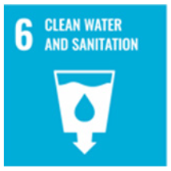 | 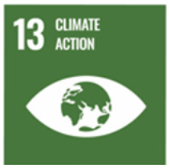 | 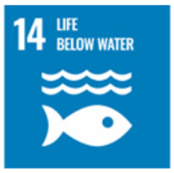 |  |  |  |  | 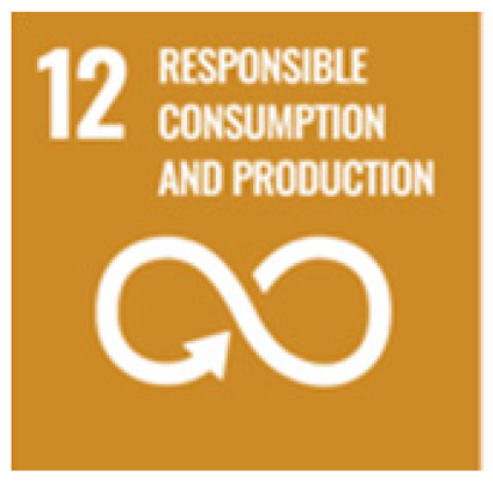 |  | 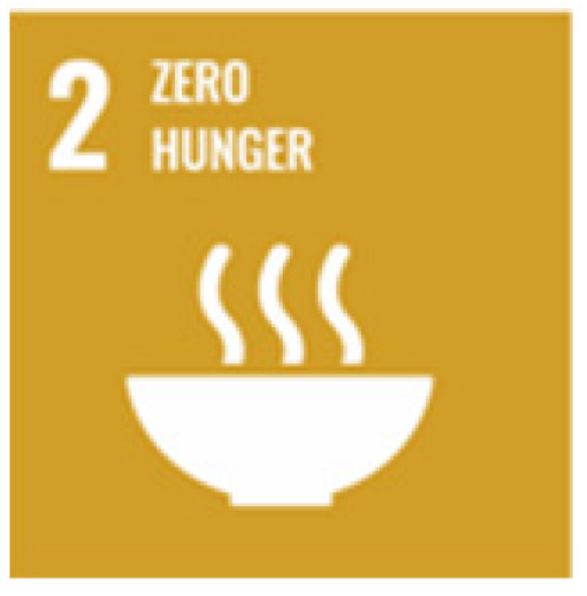 |  | 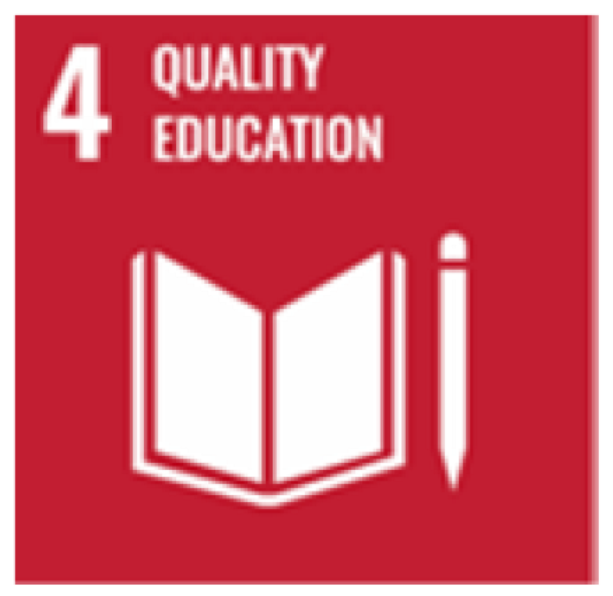 | 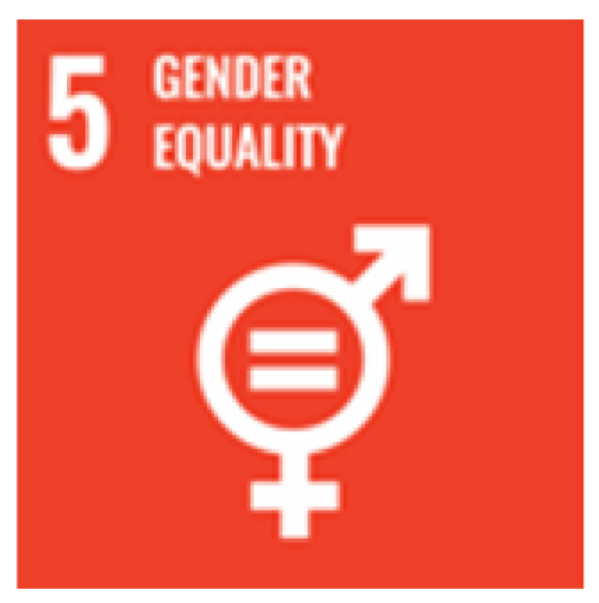 | 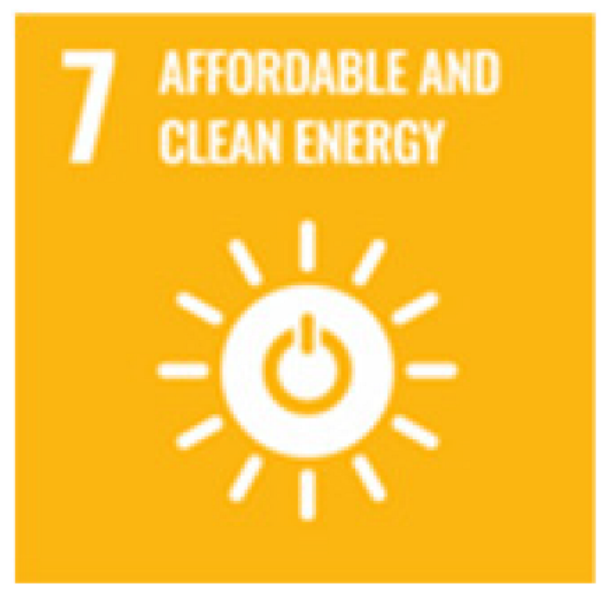 | 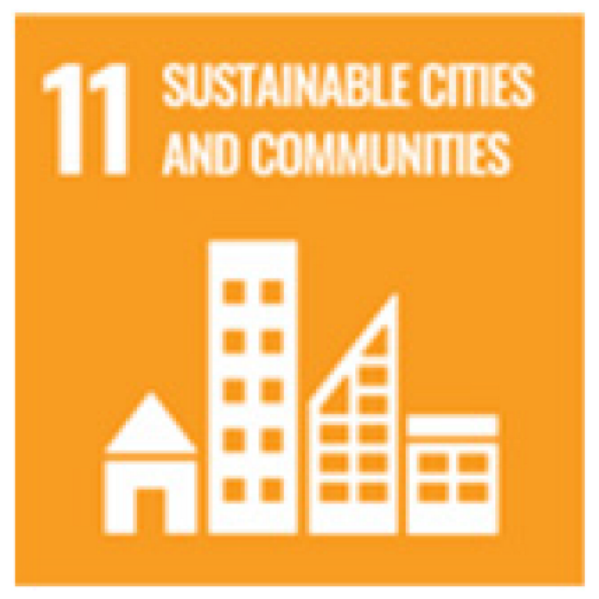 |  |
Environmental Sustainability | Economic Sustainability | Corporate Social Responsibility | ||||||||||||||
| Internal and External Sustainable Strategic Actions | ||||||||||||||||
| 1. Systemic View |
|
|
| |||||||||||||
| 2. Corporate Governance |
|
|
| |||||||||||||
| 3. Risk and Crisis Management |
|
|
| |||||||||||||
| 4. Interdependent Performance |
|
|
| |||||||||||||
| 5. Strategic Scenario Planning |
|
|
| |||||||||||||
| 6. Organizational Flexibility |
|
|
| |||||||||||||
| 7. Long Term Investments |
|
|
| |||||||||||||
| 8. Human Resources |
|
|
| |||||||||||||
| 9. Decision-making |
|
|
| |||||||||||||
| 10. Management Capabilities |
|
|
| |||||||||||||
| 11. Research and Development (R&D) |
|
|
| |||||||||||||
| 12. Technologies |
|
|
| |||||||||||||
| 13. Innovations |
|
|
| |||||||||||||
| 14. Stakeholders Partnerships and Management |
|
|
| |||||||||||||
| 15. Productive processes |
|
|
| |||||||||||||
| 16. Customer management |
|
|
| |||||||||||||
| Companies | Academia | Society | Government | |
|---|---|---|---|---|
| Environmental sustainability | From ref. [107], there is an opportunity to explore the direct and indirect relationship between the dynamic capabilities and the creation of green jobs within the circular economic sustainability context. | Include and adapt school curricula to form leaders by including an assessment of environmental sustainability integration in higher education for future experts and leaders [100] | Invest and create green products and services focused on green marketing and encourage environment friendly marketing practices (product, price, place, promotion). Success of green marketing reflects in the success of society to curb environmental problems [111] | Search for regulation on corporate social responsibility in energy, extraction, and other manufacturing sector industries, especially in developing countries [104] |
| Economic Sustainability | Creating market opportunities, business development, and company brands that convey sustainable, environmental values [113] CSR and firm performance: explore the moderation of sustainability strategy and top management commitment [98] | Teaching the local digital society to acquire competences for sustainable development [101]. Research corporate sustainability integration: Analyze corporate leadership experience and academic teaching from an organizational culture perspective; in the other words, a partnership combination [103]. | As suggested by ref. [94], investigate the post COVID-19 pandemic and consumer–employee–organization wellbeing based on the dynamic capability theory approach. | Digital governance for addressing environmental, social, and economic sustainability performance challenges [109] Citizen empowerment through smart surveillance for sustainable development goals [121] Challenges for innovation and sustainable development in Latin America and emerging developing countries and the significance of institutions and human capital [93] |
| Corporate social responsibility | As indicated by ref. [120], understand how corporate charitable and economic sustainability social responsibility practices help to improve the quality of work life for employees. Furthermore, investigate the potential of responsible business to promote sustainable work as an analysis of CSR/CSR instruments aimed at the Agenda 2030 [108] | Promote an industry-guided review of responsible investing: Bridging the divide between academia and industry [102] | Establish health policies aimed at healthy lives and wellbeing for older employees–consumers–society, based on the Agenda 2030 [124] | Explore tax incentives and environmental, social, and governance performance [105] |
Disclaimer/Publisher’s Note: The statements, opinions and data contained in all publications are solely those of the individual author(s) and contributor(s) and not of MDPI and/or the editor(s). MDPI and/or the editor(s) disclaim responsibility for any injury to people or property resulting from any ideas, methods, instructions or products referred to in the content. |
© 2024 by the authors. Licensee MDPI, Basel, Switzerland. This article is an open access article distributed under the terms and conditions of the Creative Commons Attribution (CC BY) license (https://creativecommons.org/licenses/by/4.0/).
Share and Cite
de Almeida Barbosa Franco, J.; Franco Junior, A.; Battistelle, R.A.G.; Bezerra, B.S. Dynamic Capabilities: Unveiling Key Resources for Environmental Sustainability and Economic Sustainability, and Corporate Social Responsibility towards Sustainable Development Goals. Resources 2024, 13, 22. https://doi.org/10.3390/resources13020022
de Almeida Barbosa Franco J, Franco Junior A, Battistelle RAG, Bezerra BS. Dynamic Capabilities: Unveiling Key Resources for Environmental Sustainability and Economic Sustainability, and Corporate Social Responsibility towards Sustainable Development Goals. Resources. 2024; 13(2):22. https://doi.org/10.3390/resources13020022
Chicago/Turabian Stylede Almeida Barbosa Franco, Jacqueline, Ary Franco Junior, Rosane Aparecida Gomes Battistelle, and Barbara Stolte Bezerra. 2024. "Dynamic Capabilities: Unveiling Key Resources for Environmental Sustainability and Economic Sustainability, and Corporate Social Responsibility towards Sustainable Development Goals" Resources 13, no. 2: 22. https://doi.org/10.3390/resources13020022
APA Stylede Almeida Barbosa Franco, J., Franco Junior, A., Battistelle, R. A. G., & Bezerra, B. S. (2024). Dynamic Capabilities: Unveiling Key Resources for Environmental Sustainability and Economic Sustainability, and Corporate Social Responsibility towards Sustainable Development Goals. Resources, 13(2), 22. https://doi.org/10.3390/resources13020022







